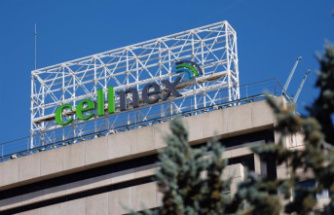Whoever first said it’s rude to discuss your salary was probably a man.
Since 1997, Glamour Magazine has published an annual story that looks at the salaries of women in different fields. They’ve profiled women in nearly every imaginable field, from a $27,500 a year grocery store produce assistant (2014,) to an $80,000 a year mortician (2010,) to a $240,000 a year medical researcher (2015.)
But for the twentieth anniversary of the Salary Survey, the magazine took on the gender wage gap.
Glamour spoke with six women and six men, of comparable job titles, experience, and location within their respective fields. In all but one case, the man earned more than the woman.
The six pairs interviewed were software engineers, data analysts, cashiers, digital strategists, sales executives, and graphic designers. Simi, a 27-year-old sales executive, was the only one who made more than her male counterpart — $139,013 to 28-year-old Tony’s $120,000. Simi told Glamour that she had worked with a negotiation coach.
According to the US Bureau of Labor Statistics women, on average, earn 83 percent of what men earn. This number is derived from the median annual salary of full-time working women, and doesn’t account for education or experience, among other impacting factors. It also doesn’t account for race, as minority women face an even wider wage gap than Caucasian women. In September, the Economic Policy Institute reported that African American women earn 66 percent of a Caucasian man’s salary, and Hispanic women earn 58 percent.
One of Glamour’s most glaring revelations was between 46-year-old Rose and 35-year-old Danilo, both digital strategists — Rose works for a PR firm, and Danilo works for an energy company.
“Just because of her five years at IBM and two years at CA Technologies, I would argue she makes a lot more,” Jamie Coakley, a managing director at one of NYC’s top-rated headhunting firms, told Glamour. Coakley worked with the magazine to assess each pairs’ relevant experience and employment history to determine what each individual should be making, then was told what they were actually making. She told Glamour she was scared to learn the salaries of this particular pair.
Rose makes $70,000 to Danilo’s $114,000.
Rose told Glamour she made more 10 years ago, but took time off and freelanced after her second son was born. Danilo also has a son, with another baby on the way. They’re both children of immigrants who were among the first in their families to receive a college degree.
The discussion around the gender pay gap has continued to grow, with more and more research drawing aiming to draw attention to the often shocking disparities. A study from July showed that female doctors make an average $20,000 less a year than their male counterparts. Media, which has one of the worst gender pay gaps of any industry, sees men earning 6.7 percent more than women on average. Most recently, Natalie Portman told Marie Claire UK that Ashton Kutcher was paid three times more than her for their roles in the 2011 rom-com “No Strings Attached.”
Women earned 59 percent of what men made in 1963, the year the Equal Pay Act was passed. In the 54 years since, the gap has only narrowed 24 percent— that accounts for about half a penny gain each year. A 2016 report from the US Congress Joint Economic Committee showed that if current trends continue, the wage gap won’t close until 2059.
The survey acknowledged that interviewing 12 subjects is far from a full scientific survey, but that hopefully the revelations will keep the disproportions shrinking in the right direction.
Our editors found this article on this site using Google and regenerated it for our readers.













